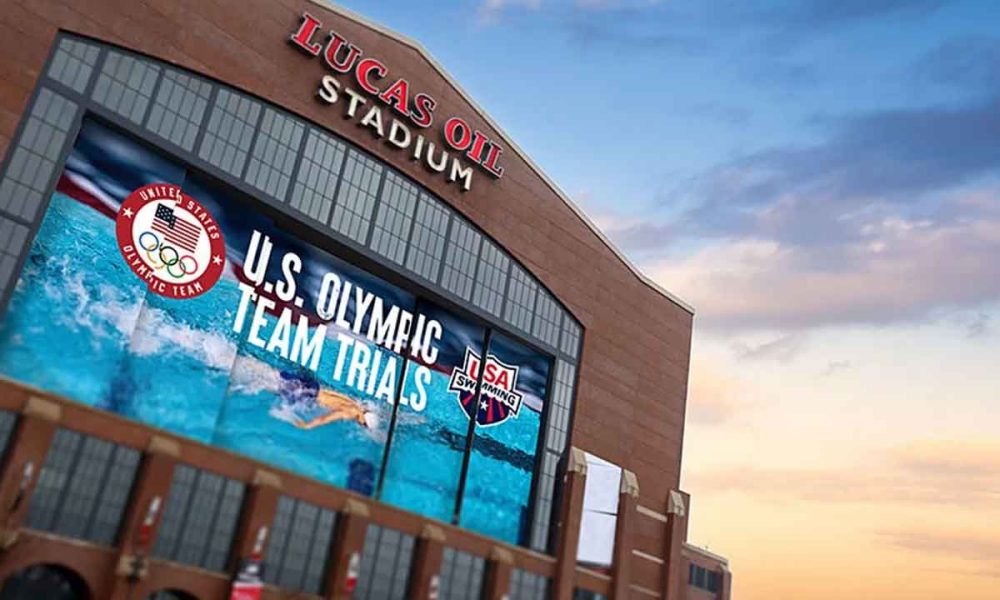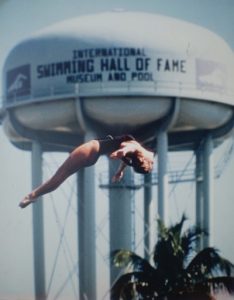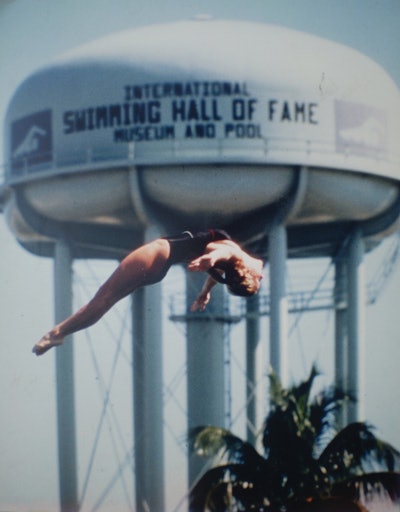Walking into Lucas Oil Stadium, the home of the Indianapolis Colts, one would expect the familiar scent of fresh-cut grass and the sight of emerald-green turf. However, for the next 10 days, visitors are greeted by the shimmering blue of a swimming pool and the distinct, though surprisingly faint, smell of chlorine. This unique transformation is in preparation for the U.S. Olympic Swimming Trials, turning an NFL stadium into the world’s largest indoor swimming venue.
The evolution of the U.S. Olympic Trials has seen the event outgrow traditional swimming facilities and basketball venues, necessitating a shift to more spacious arenas. Past venues, such as the Jamail Texas Swim Center in Austin and the IUPUI Natatorium in Indianapolis, simply couldn’t accommodate the growing number of spectators. Following a series of Trials hosted in Omaha’s basketball arena from 2008 to 2021, the decision was made to explore an even larger setting: an NFL stadium.
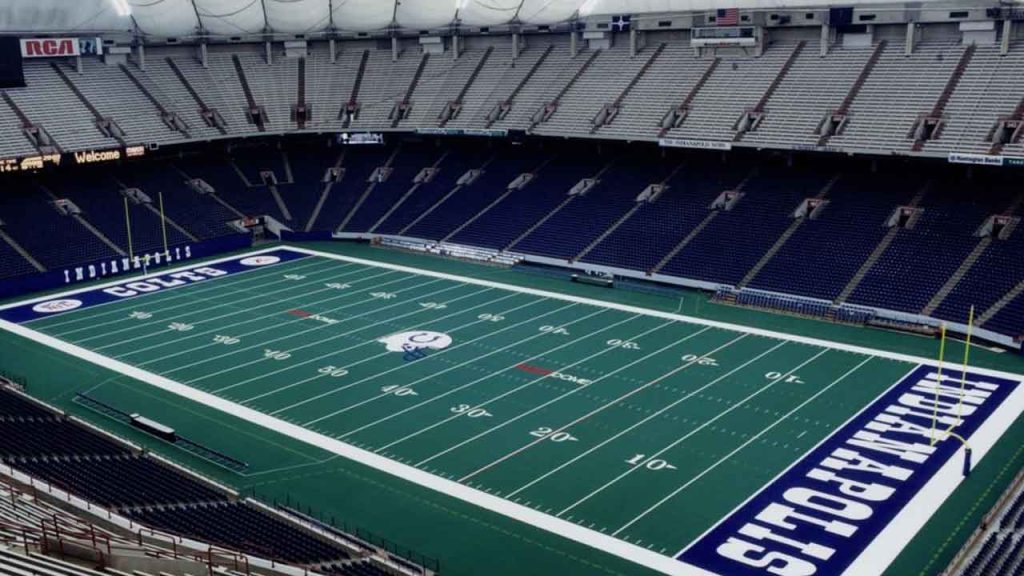
The concept of hosting the Trials in a football stadium was conceived during a dinner meeting in 2018 between USA Swimming CEO Tim Hinchey and local businessman Scott Davison. Their discussion laid the groundwork for what would become a groundbreaking venture in sports event management. The ambitious idea was met with enthusiasm from key stakeholders, including the Indiana Sports Corporation and the operators of Lucas Oil Stadium.
Making The Transformation From Football Field to Olympic Swimming Pool
Transforming Lucas Oil Stadium from a football field to a swimming arena was no small feat. The stadium’s director, Eric Neuburger, who has deep roots in the swimming community, embraced the challenge. The conversion process involved the construction of a temporary pool using advanced technology similar to that employed in Omaha’s CHI Health Center.
In late May, a fire hydrant on Capitol Avenue was opened to fill the competition pool with a million gallons of water, followed by another million gallons for the warmup and warmdown pool. The pools, constructed with modular technology, were designed to fit seamlessly within the stadium’s infrastructure, ensuring stability and optimal performance conditions for the swimmers.
Enhancing the Athlete Experience
One of the critical improvements in this setup is the proximity and size of the warmup-warmdown pool, located just beyond a massive curtain dividing the stadium. This pool features ten 50-meter lanes and seven 25-yard lanes, providing ample space for athletes to prepare and recover. Additionally, the deck area behind the curtain is equipped with whirlpools, hot and cold tubs, and massage tables to support the swimmers’ rigorous schedules.
The athletes and coaches also benefit from enhanced seating arrangements. Unlike previous venues where they were cramped into limited sections, Lucas Oil Stadium offers 1,200 seats along the pool’s length, fostering a more comfortable and motivating environment.
Lucas Oil Stadium Gears Up For Crowds of Spectators
With a seating capacity of up to 30,000, the Lucas Oil setup is designed to accommodate a significant number of spectators, although USA Swimming realistically aims to fill about half of that on average during the competition. This ambitious seating plan aims to break the world indoor attendance record for a swim meet, a testament to the scale and vision of the event.
The spectator experience is further enriched by advanced technological features, including a 70-foot video board at the pool deck entrance and a giant four-sided scoreboard above the pool. These additions ensure that every spectator, regardless of their distance from the pool, has a clear view of the action and real-time updates on the swimmers’ performances.
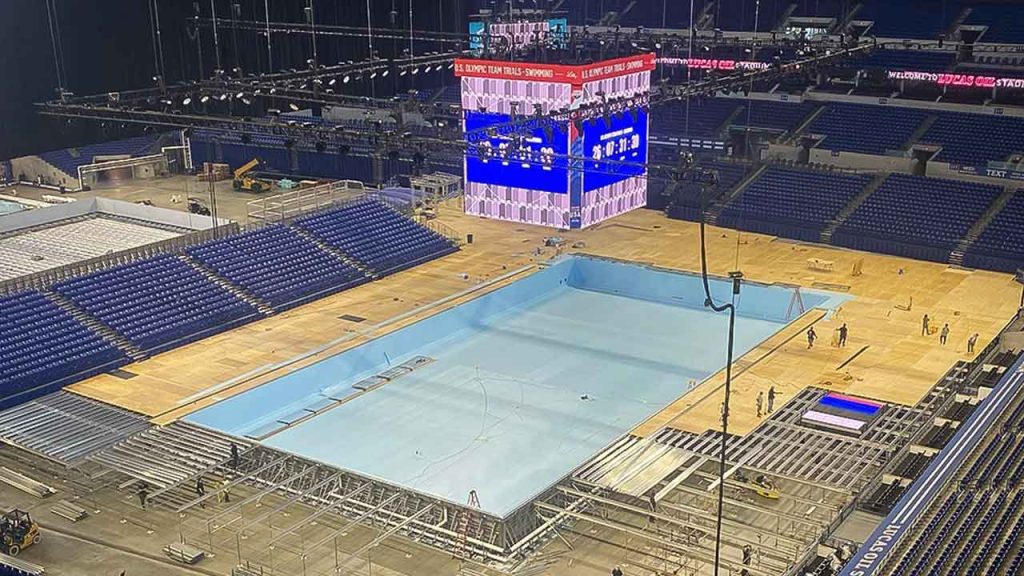
A Milestone for Lucas Oil Stadium
Lucas Oil Stadium’s transformation marks a significant milestone in the history of the U.S. Olympic Trials. Indianapolis, with its rich history of hosting major sporting events, including the Pan American Games and the NCAA Final Four, is an ideal location for this grand experiment. The stadium itself, adorned with a mural of Olympic hopeful Kate Douglass alongside a statue of NFL legend Peyton Manning, symbolizes the merging of two worlds: football and swimming.
Future Implications
The success of this event could set a new standard for future Olympic Trials. By utilizing large venues like NFL stadiums, USA Swimming aims to elevate the sport’s profile and provide a more dynamic and inclusive experience for athletes and fans alike.
The transformation of Lucas Oil Stadium into an Olympic swimming venue represents a remarkable fusion of sports and a bold step forward for USA Swimming. This innovative approach not only addresses the logistical challenges of hosting large-scale swimming events but also enhances the overall experience for athletes and spectators. Whether this experiment becomes the new norm or remains a unique chapter in the history of the Olympic Trials, it undeniably sets a new benchmark for the sport’s future.
Featured Photo Credit: USA Swimming
The post From Field of Dreams to Olympic Trials: Lucas Oil Stadium’s Pool Makeover appeared first on PoolMagazine.com – Get The Latest Pool News.

